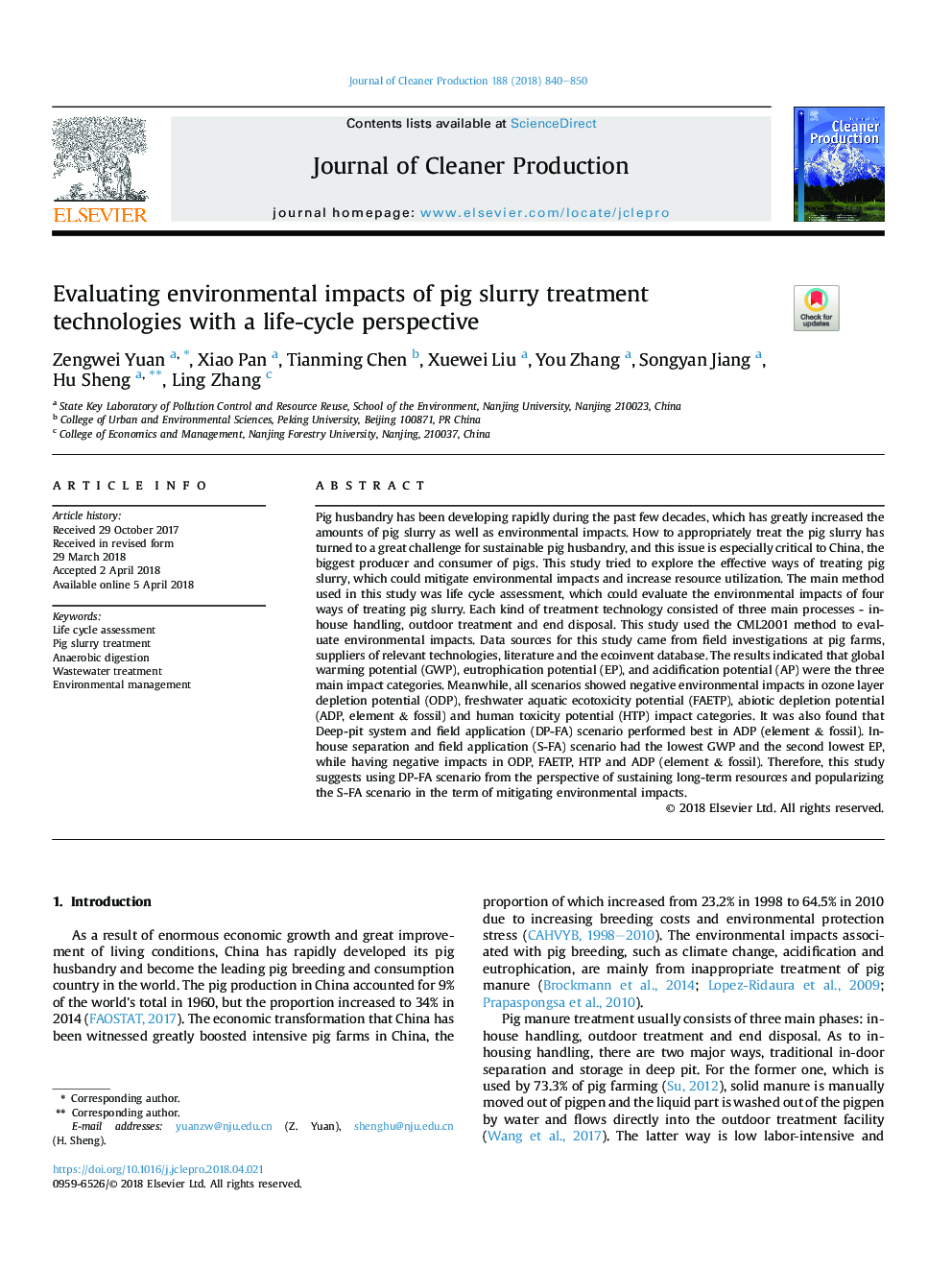| کد مقاله | کد نشریه | سال انتشار | مقاله انگلیسی | نسخه تمام متن |
|---|---|---|---|---|
| 8095668 | 1522065 | 2018 | 11 صفحه PDF | دانلود رایگان |
عنوان انگلیسی مقاله ISI
Evaluating environmental impacts of pig slurry treatment technologies with a life-cycle perspective
ترجمه فارسی عنوان
ارزیابی اثرات زیست محیطی فنآوریهای فرایند زراعی خوک با چشم انداز چرخه عمر
دانلود مقاله + سفارش ترجمه
دانلود مقاله ISI انگلیسی
رایگان برای ایرانیان
کلمات کلیدی
ارزیابی چرخه حیات، درمان جلبک خوک، هضم بی هوازی تصفیه فاضلاب، مدیریت زیست محیطی،
موضوعات مرتبط
مهندسی و علوم پایه
مهندسی انرژی
انرژی های تجدید پذیر، توسعه پایدار و محیط زیست
چکیده انگلیسی
Pig husbandry has been developing rapidly during the past few decades, which has greatly increased the amounts of pig slurry as well as environmental impacts. How to appropriately treat the pig slurry has turned to a great challenge for sustainable pig husbandry, and this issue is especially critical to China, the biggest producer and consumer of pigs. This study tried to explore the effective ways of treating pig slurry, which could mitigate environmental impacts and increase resource utilization. The main method used in this study was life cycle assessment, which could evaluate the environmental impacts of four ways of treating pig slurry. Each kind of treatment technology consisted of three main processes - in-house handling, outdoor treatment and end disposal. This study used the CML2001 method to evaluate environmental impacts. Data sources for this study came from field investigations at pig farms, suppliers of relevant technologies, literature and the ecoinvent database. The results indicated that global warming potential (GWP), eutrophication potential (EP), and acidification potential (AP) were the three main impact categories. Meanwhile, all scenarios showed negative environmental impacts in ozone layer depletion potential (ODP), freshwater aquatic ecotoxicity potential (FAETP), abiotic depletion potential (ADP, element & fossil) and human toxicity potential (HTP) impact categories. It was also found that Deep-pit system and field application (DP-FA) scenario performed best in ADP (element & fossil). In-house separation and field application (S-FA) scenario had the lowest GWP and the second lowest EP, while having negative impacts in ODP, FAETP, HTP and ADP (element & fossil). Therefore, this study suggests using DP-FA scenario from the perspective of sustaining long-term resources and popularizing the S-FA scenario in the term of mitigating environmental impacts.
ناشر
Database: Elsevier - ScienceDirect (ساینس دایرکت)
Journal: Journal of Cleaner Production - Volume 188, 1 July 2018, Pages 840-850
Journal: Journal of Cleaner Production - Volume 188, 1 July 2018, Pages 840-850
نویسندگان
Zengwei Yuan, Xiao Pan, Tianming Chen, Xuewei Liu, You Zhang, Songyan Jiang, Hu Sheng, Ling Zhang,
